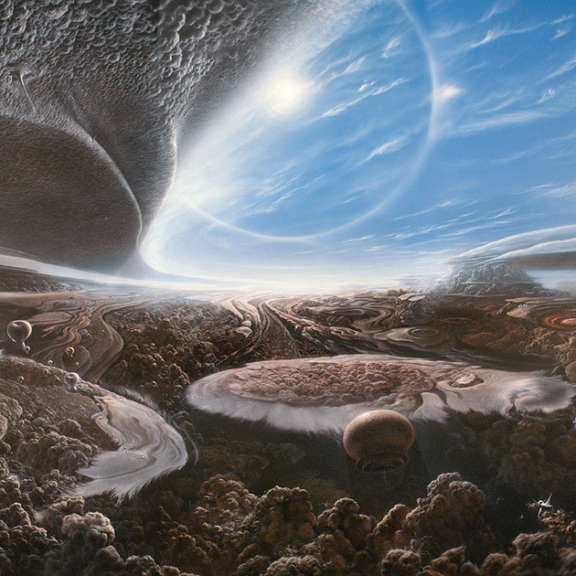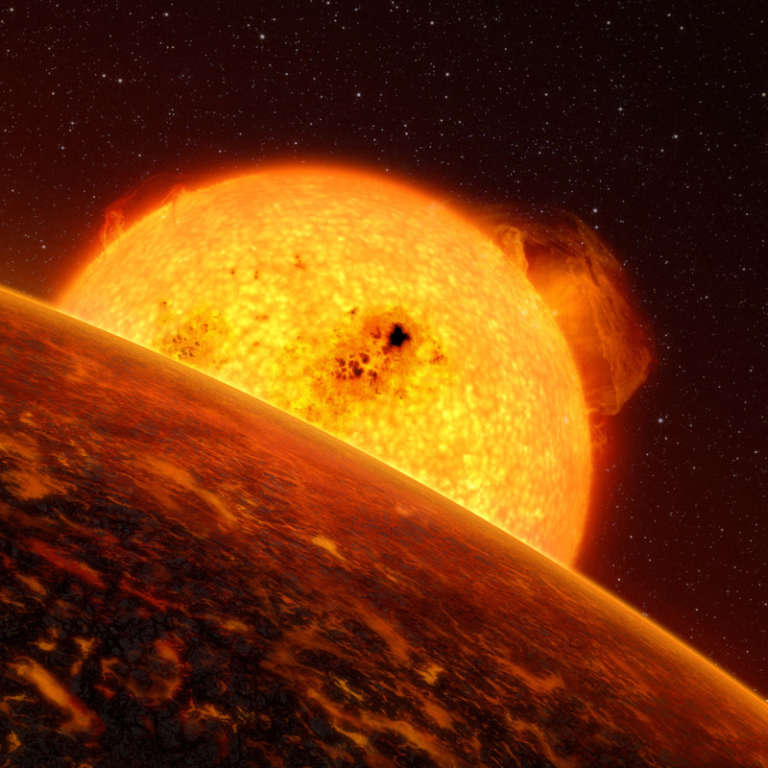All
All
Stories, updates, insights, and original analysis from The Planetary Society.
New Robotic Spacecraft Posters
Another round of posters to celebrate historic planetary missions.
Book Review: “The Art of Space: The History of Space Art, From the Earliest Visions to the Graphics of the Modern Era”
Mat Kaplan reviews a comprehensive new collection of historic and modern space art from author and superb space artist Ron Miller.
The Art of Planetary Science
On October 17-19, 2014, the Lunar and Planetary Laboratory on the University of Arizona campus hosted the second annual Art of Planetary Science exhibition. This exhibition featured works of art inspired by the solar system, alongside works by scientists created from their scientific data.
Creating Life on a Gas Giant
Adolf Schaller, an artist on the original Cosmos series, shares his experience of creating the painting,
What would Earth's skies look like with Saturn's rings?
Illustrator and author Ron Miller visualizes what we would see in our skies if Saturn’s majestic rings circled the Earth.
Watch the recording of my Google+ Science Hour with guest Dan Durda
On June 6 I hosted the Cosmoquest Weekly Science Hour. My guest was Dan Durda of the Southwest Research Institute. We talked asteroids, impact mitigation, searches for Vulcanoids, and suborbital experiments, and then he took us through how he creates his digital space art.
Artist's views of a night sky transformed by a galaxy merger
A measurement of the Andromeda galaxy's proper motion shows it's coming directly at us, and will collide with the Milky Way in 4 billion years. The event will transform the appearance of our night sky.
Stardust update: Tempel 1 not yet spotted by spacecraft, hopefully next week
A new update has been posted to the Stardust website: The spacecraft continues to operate as expected and all subsystems are healthy on approach to comet Tempel 1.
A brush painting for Hayabusa
Upon James Aldridge's return from Japan, he posted several albums worth of amazing photos, including several of their calligraphy instructor, well-known artist Aiko Tanaka, creating a gestural brush painting to commemorate Hayabusa's return.
What planet is THIS?
Check out this watery world! It's clearly a computer simulation of something, but of what? Can you guess?
Evaporating exoplanet
CoRoT-7b was the first unambiguously rocky planet to be discovered and was quite small, at under five Earth masses. But a press release issued today suggests that its history probably has little to do with Earth's.
The Planetary Society and the Search for Extrasolar Planets
Almost since it was founded in 1980, The Planetary Society has been there for the search for other worlds.


 Explore Worlds
Explore Worlds Find Life
Find Life Defend Earth
Defend Earth


 Sun
Sun Mercury
Mercury Venus
Venus Earth
Earth Mars
Mars Jupiter
Jupiter Saturn
Saturn Uranus
Uranus Neptune
Neptune Small Bodies
Small Bodies










